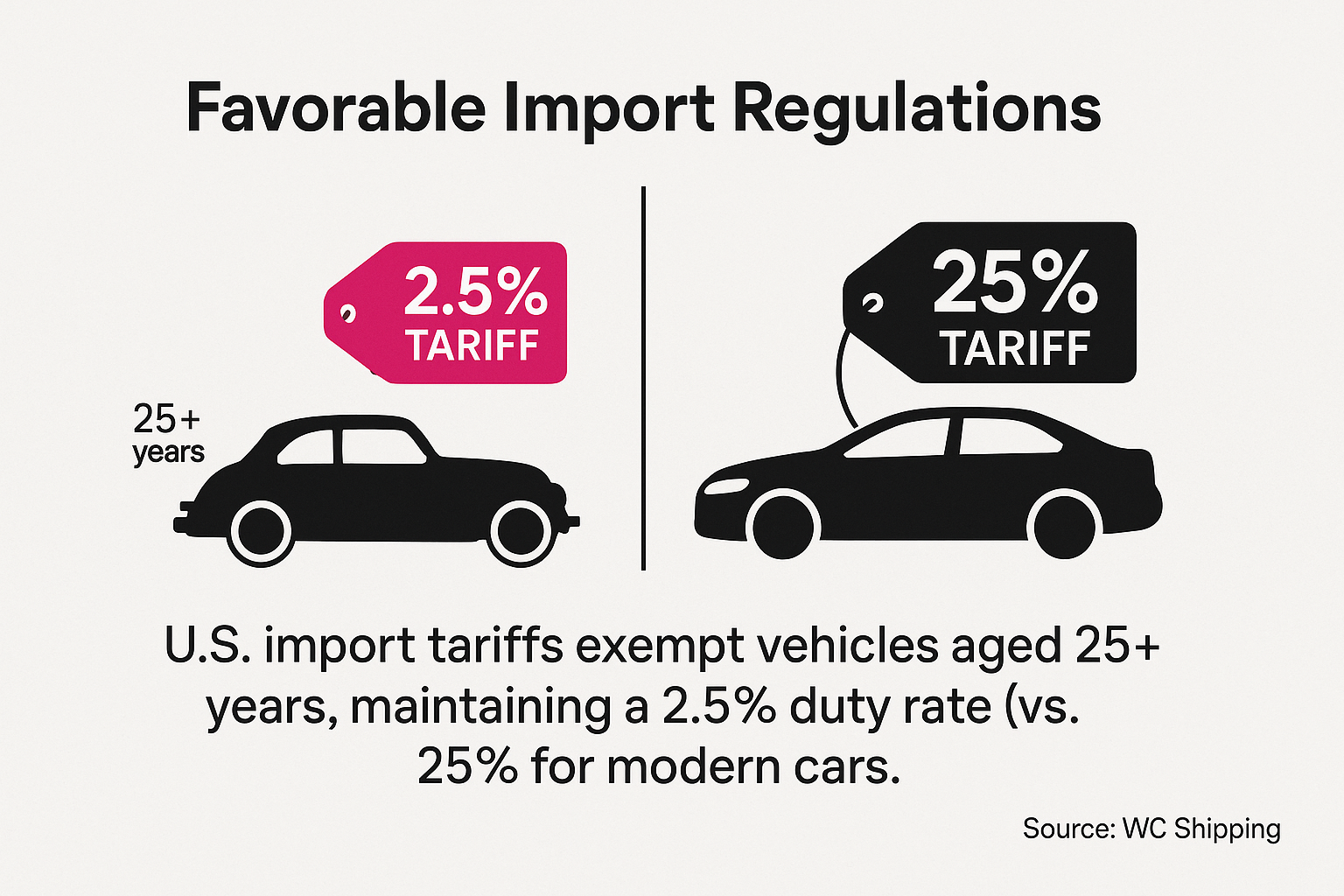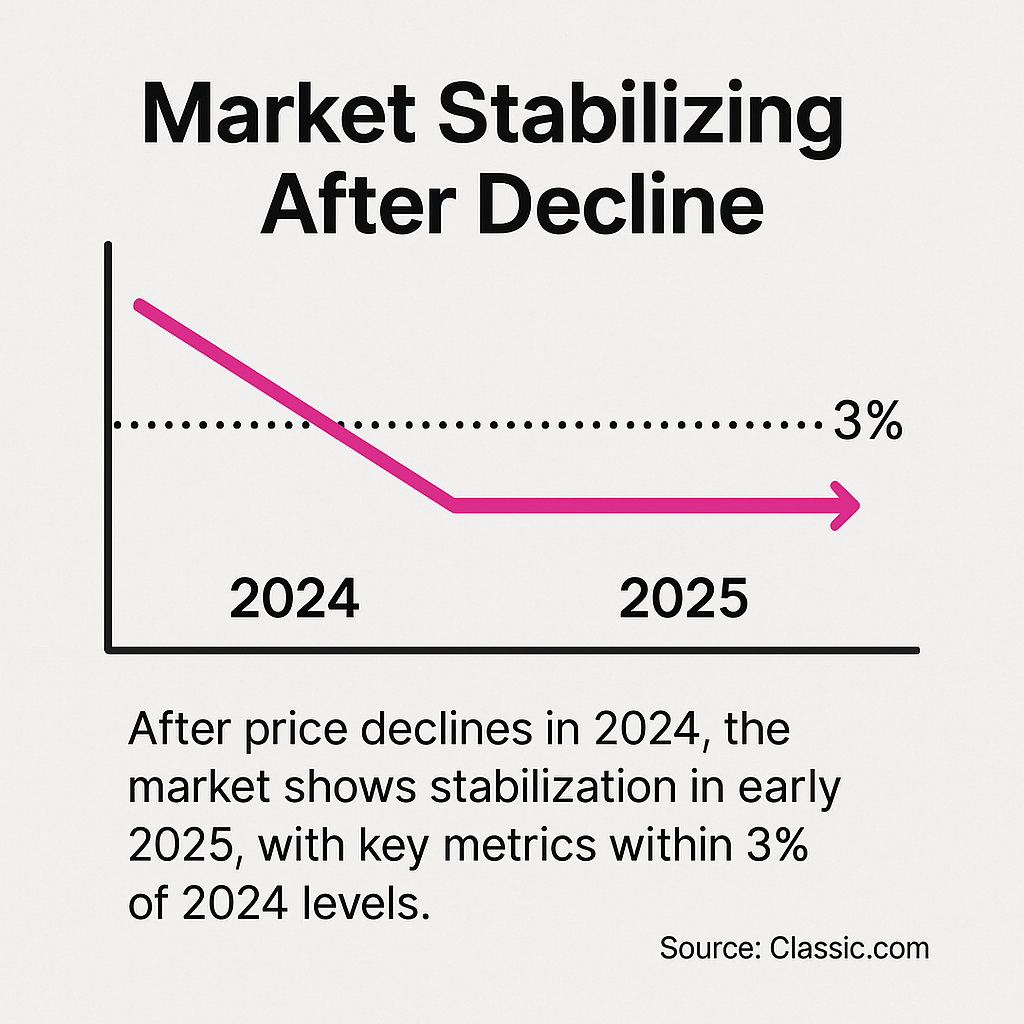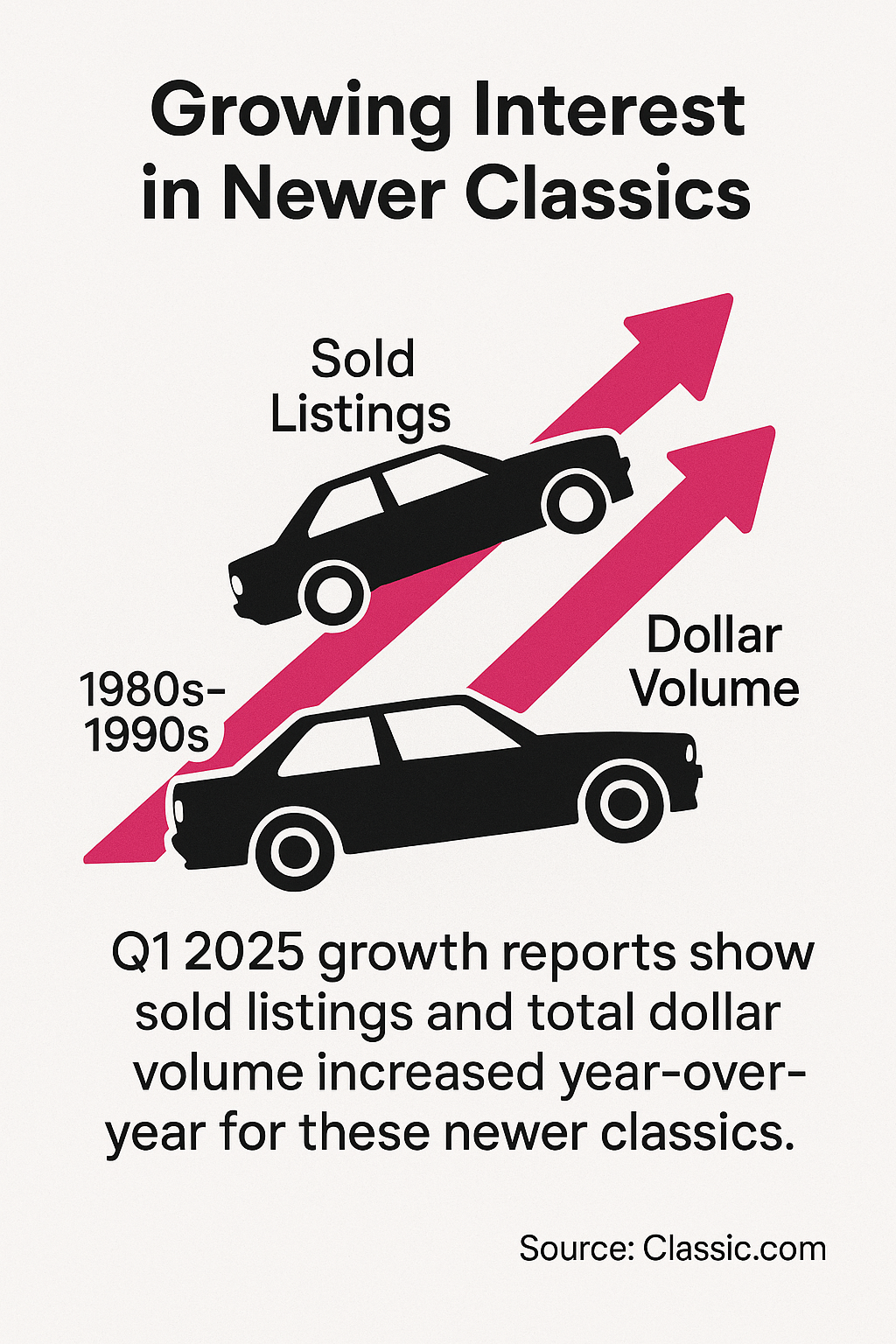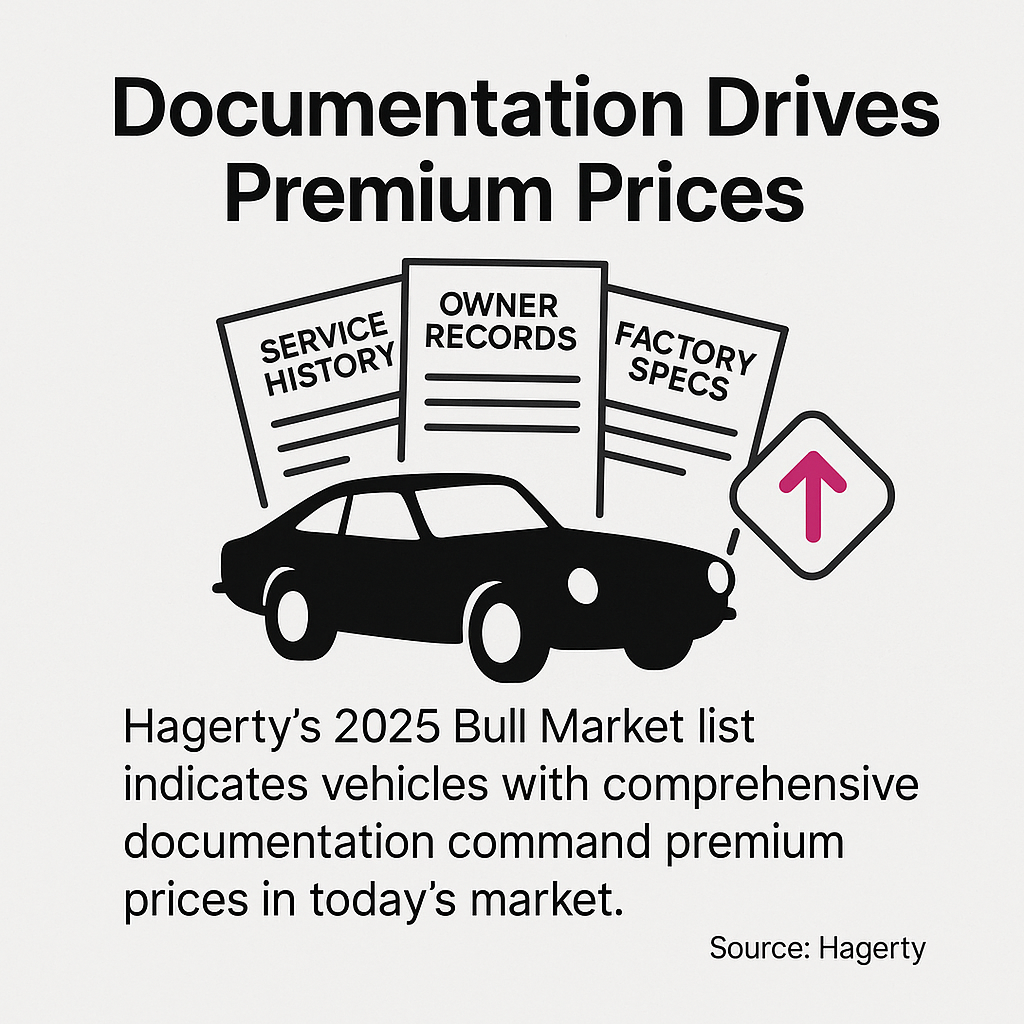.png)
Classic car restoration combines passion, skill, and a deep appreciation for automotive history. As the owner of an agency specializing in aftermarket auto parts eCommerce, I've seen firsthand how the right content strategy transforms parts suppliers from simple vendors into trusted resources for the restoration community. The classic car market presents unique opportunities for content marketers who understand how to engage with enthusiast audiences effectively.
Unlike typical automotive marketing, selling classic car parts requires tapping into powerful emotional connections. Enthusiasts don't just buy parts—they invest in preserving history, recreating experiences, and fulfilling lifelong dreams. This emotional foundation makes content marketing particularly effective when done right.
This guide explores proven strategies for creating content that resonates with classic car enthusiasts while driving meaningful business results for parts suppliers. We'll examine market trends, audience psychology, and specific content approaches that leverage nostalgia to build lasting customer relationships.
The classic car market shows remarkable strength. The U.S. classic car market is valued at $12.6 billion in 2024, projected to reach $24.8 billion by 2032, growing at an 8.82% CAGR. (Source: Credence Research)
Several factors drive this growth. First, many view classic cars as investment assets, particularly as disposable incomes rise. The collector mentality creates steady demand for quality parts. Second, the community aspect attracts enthusiasts who value shared experiences.

A key regulatory factor impacts the market significantly. U.S. import tariffs exempt vehicles aged 25+ years, maintaining a 2.5% duty rate (vs. 25% for modern cars). This fuels cross-border demand, particularly for 1990s-2000s models now reaching eligibility. (Source: WC Shipping)
Recent market performance shows resilience. After price declines in 2024, the market shows stabilization in early 2025, with key metrics within 3% of 2024 levels. (Source: Classic.com)

|
Market Segment
|
Growth Rate
|
Key Content Opportunities
|
Primary Customer Motivations
|
|---|---|---|---|
|
Pre-1960s Classics
|
6.5%
|
Historical documentation, authenticity verification
|
Investment, preservation, historical significance
|
|
1960s-1970s Muscle Cars
|
9.2%
|
Restoration guides, performance upgrades
|
Nostalgia, performance enhancement, show display
|
|
1980s-1990s Emerging Classics
|
12.4%
|
Maintenance tips, modification guidance
|
Childhood memories, affordable entry point, usability
|
|
Restomod/Electrified Classics
|
15.8%
|
Conversion guides, modern integration tutorials
|
Sustainability, modern performance, uniqueness
|
This segmented market overview highlights opportunities for tailored content strategies. Each category represents distinct customer needs and motivations that should inform your content approach.
Understanding your audience drives effective content. Classic car enthusiasts differ from typical automotive consumers in several important ways. They often possess deep technical knowledge, value authenticity above convenience, and view their projects as personal expressions.
The psychological aspect of classic car ownership plays a crucial role. Many enthusiasts seek to recapture meaningful memories—their first car, a parent's prized vehicle, or the poster car from their youth. Others pursue the status and community recognition that comes with preserving automotive heritage.
Creating resonant content requires understanding these motivations. Here are the key characteristics that define most classic car enthusiasts:
These traits inform successful content strategies. Your marketing should demonstrate technical knowledge, foster community, provide depth, and acknowledge the emotional investment inherent in restoration projects.

Importantly, different age segments connect with different eras of classics. Recent data shows significant growth in interest for 1980s-1990s models as the generation that grew up with these vehicles reaches peak earning capacity. Q1 2025 growth reports show sold listings and total dollar volume increased year-over-year for these newer classics. (Source: Classic.com)
Content marketing for classic car parts differs from general automotive content. The focus shifts from convenience and modernity to authenticity, heritage, and craftsmanship. Successful aftermarket auto parts strategies require adaptation for the classic market.
The most effective content establishes your brand as both knowledgeable and respectful of tradition. This balance builds trust with technically savvy customers who quickly identify misunderstandings or inaccuracies. Let's explore the core strategies that drive results.
|
Content Type
|
Effectiveness Rating
|
Production Complexity
|
Customer Value
|
|---|---|---|---|
|
Restoration Guides
|
Very High
|
High
|
Very High
|
|
Parts Catalogs with History
|
High
|
Medium
|
High
|
|
Installation Videos
|
Very High
|
High
|
Very High
|
|
Owner Showcases
|
Medium
|
Low
|
Medium
|
|
Technical Specifications
|
High
|
Medium
|
High
|
|
Historical Articles
|
Medium
|
Medium
|
Medium
|
This comparison helps prioritize content investments based on both customer value and resource requirements. Now let's examine four key strategies in detail.
Parts provenance matters immensely to classic car enthusiasts. Content that details the origins, manufacturing processes, and historical context of your products adds significant value. This approach particularly applies to reproduction parts, where authenticity concerns often arise.
Effective provenance content includes:
This strategy transforms basic product listings into compelling stories. A simple chrome trim piece becomes part of automotive heritage when properly contextualized. This depth differentiates your brand from commodity parts suppliers while justifying premium pricing.
Restoration guides provide immense value while establishing your brand as an authority. How do you effectively sell specialized auto parts online? By becoming an indispensable resource for technical knowledge.
The best restoration content addresses specific challenges for different skill levels. Beginners need basic guidance while experienced restorers seek advanced techniques. Your content should clearly indicate the required expertise level and provide appropriate detail accordingly.
Model-specific content performs particularly well. While general restoration principles apply broadly, enthusiasts primarily search for information relevant to their specific vehicle. Creating targeted content for popular models drives highly qualified traffic to your site.
Consider creating restoration content series that follow logical project progression. This approach encourages return visits and positions your brand as a companion throughout the restoration journey.
Video content delivers exceptional value for classic car parts marketing. Complex installation procedures, troubleshooting techniques, and comparison demonstrations become much clearer through visual presentation. This format builds confidence in both your products and the customer's ability to use them successfully.
Effective video content should focus on clarity rather than production value. Enthusiasts prioritize accurate, detailed information over slick presentation. Basic best practices include:
Video content also supports multiple marketing channels. The same demonstration can appear on your product pages, YouTube channel, social media, and email campaigns, maximizing your content investment.
Community-building content creates emotional connections beyond individual transactions. This approach recognizes that classic car enthusiasts value belonging to a group that shares their passion. By facilitating these connections, your brand becomes woven into the enthusiast's identity.
Effective community content includes customer spotlights, restoration project features, event coverage, and historical retrospectives. These formats celebrate the shared passion while subtly positioning your products within authentic restoration contexts.
User-generated content plays a vital role in community building. Encouraging customers to share their projects featuring your parts creates authentic endorsements while providing fresh content. Creating specific hashtags and featuring customer submissions establishes a virtuous cycle of engagement.
Creating great content represents only half the challenge. Strategic distribution ensures your content reaches the right audience at optimal times. Classic car enthusiasts use specific channels and platforms that may differ from mainstream automotive consumers.
|
Content Type
|
Effectiveness Rating
|
Production Complexity
|
Customer Value
|
|---|---|---|---|
|
Restoration Guides
|
Very High
|
High
|
Very High
|
|
Parts Catalogs with History
|
High
|
Medium
|
High
|
|
Installation Videos
|
Very High
|
High
|
Very High
|
|
Owner Showcases
|
Medium
|
Low
|
Medium
|
|
Technical Specifications
|
High
|
Medium
|
High
|
|
Historical Articles
|
Medium
|
Medium
|
Medium
|
This channel comparison helps allocate resources effectively across platforms. Different content types perform better on specific channels, requiring thoughtful distribution planning.
Email marketing delivers exceptional value for classic car parts suppliers. The direct connection to interested customers allows for detailed technical content that wouldn't work in other formats. Automotive email marketing for aftermarket sales works particularly well when customized for enthusiast audiences.
Segment your email list by vehicle interest for maximum relevance. Enthusiasts restoring 1960s muscle cars have different needs than those working on 1980s imports. This targeting improves engagement rates while positioning your brand as uniquely attentive to specific restoration challenges.
Technical content performs exceptionally well in email campaigns. Detailed specifications, compatibility guides, and installation tips provide immediate value while establishing your expertise. Include visual elements that demonstrate part quality and proper installation.
Social media strategy for classic car parts requires platform-specific approaches. Each channel has distinct content preferences and audience behaviors. Visual platforms like Instagram showcase finished projects and beautiful parts, while discussion-oriented platforms like Facebook facilitate community building.
Instagram works exceptionally well for classic car content. The visual nature of restoration projects creates naturally engaging content. Before/after comparisons, detail shots of quality parts, and restoration progress updates generate strong response. Use model-specific and era-specific hashtags to reach enthusiasts searching for relevant content.
Facebook groups provide targeted access to enthusiast communities. Many groups focus on specific makes, models, or eras, allowing for highly relevant content distribution. Participate authentically by providing helpful information rather than obvious sales pitches. This approach establishes trust while creating natural opportunities to mention your products.
Influencer partnerships amplify your content reach while adding credibility. In the classic car space, influence derives from demonstrated expertise and project quality rather than follower count alone. Focus on authentic restoration experts who create detailed, technically accurate content.
The most effective partnerships provide value to all parties. Supply quality parts for influencer projects in exchange for honest documentation of their use. This approach generates authentic content while showcasing your products in real-world applications.
Documentation standards matter for influencer partnerships. Establish clear expectations for content quality, technical accuracy, and brand representation. Provide technical specifications and historical context to ensure influencers can accurately present your products.
Effective measurement guides ongoing content optimization. Classic car parts marketing requires specialized metrics that may differ from general eCommerce. The longer sales cycles and research-intensive nature of restoration projects necessitates tracking both immediate engagement and long-term influence.
|
Metric Category
|
Specific Measurements
|
Importance
|
Evaluation Frequency
|
|---|---|---|---|
|
Content Engagement
|
Time on page, video completion rate, comment quality
|
High
|
Weekly
|
|
Technical Authority
|
Forum mentions, expert citations, knowledge base usage
|
Very High
|
Monthly
|
|
Community Growth
|
Email subscribers, group members, social followers
|
Medium
|
Monthly
|
|
Revenue Impact
|
Content-attributed sales, average order value, repeat purchases
|
Very High
|
Quarterly
|
This measurement framework balances immediate engagement metrics with longer-term business impact indicators. Tracking these metrics consistently helps identify your most effective content types.
Attribution models require adjustment for classic car content. The standard 30-day attribution window often undervalues content that influences purchases over longer timeframes. Consider implementing custom attribution models that account for the extended research phase typical in restoration projects.
Qualitative feedback provides crucial context for quantitative metrics. Monitor forums, comments, and customer service interactions to understand how your content influences perception and purchasing decisions. These insights often reveal content opportunities not apparent in standard analytics.
Based on automotive aftermarket research insights, tracking seasonal patterns helps optimize content timing. Classic car activity typically increases in spring and early summer as enthusiasts prepare for show season. Align your most impactful content with these natural activity cycles.
Staying ahead of market trends creates competitive advantage. Several emerging developments are reshaping content needs in the classic car parts market, creating new opportunities for innovative suppliers.
The electrification trend continues gaining momentum in the classic car world. A growing segment of enthusiasts seeks to combine vintage aesthetics with modern electric powertrains. Content addressing this trend—conversion guides, component integration techniques, and performance expectations—attracts this progressive audience segment.
The 1980s-1990s nostalgia wave represents a significant opportunity. Vehicles from this era are now reaching "classic" status as their original owners enter peak earning years. Content specifically targeting these emerging classics—maintenance guides, common failure points, and modernization options—serves this growing market segment.

Collectors are increasingly focused on provenance and documentation. Hagerty's 2025 Bull Market list indicates vehicles with comprehensive documentation command premium prices in today's market. (Source: Hagerty)
Content that helps owners document their vehicles and parts—authenticity guides, period-correct specifications, and restoration documentation templates—provides significant value while positioning your brand as a preservation partner.

Content marketing for classic car parts suppliers offers exceptional opportunities for brands that understand enthusiast psychology. By creating technically accurate, emotionally resonant content, you transform your business from a simple parts vendor into a trusted restoration partner.
The strategies outlined here—showcasing provenance, creating detailed guides, leveraging video, and building community—work together to establish authority and build lasting customer relationships. When implemented consistently, this approach drives both immediate sales and long-term loyalty.
The classic car market's continued growth provides a solid foundation for content investments. By aligning your content strategy with the specific needs of different enthusiast segments, you position your brand for sustainable success in this passionate and profitable niche.
For auto parts suppliers ready to implement these strategies, what content marketing ideas are worth implementing first? Start with detailed guides for your most popular product categories, then expand into video demonstrations and community features as resources allow. This progressive approach builds momentum while making efficient use of your marketing budget.
Our customers value boutique agency approach with access to a seasoned team, profit-based goals, and clear communication.



